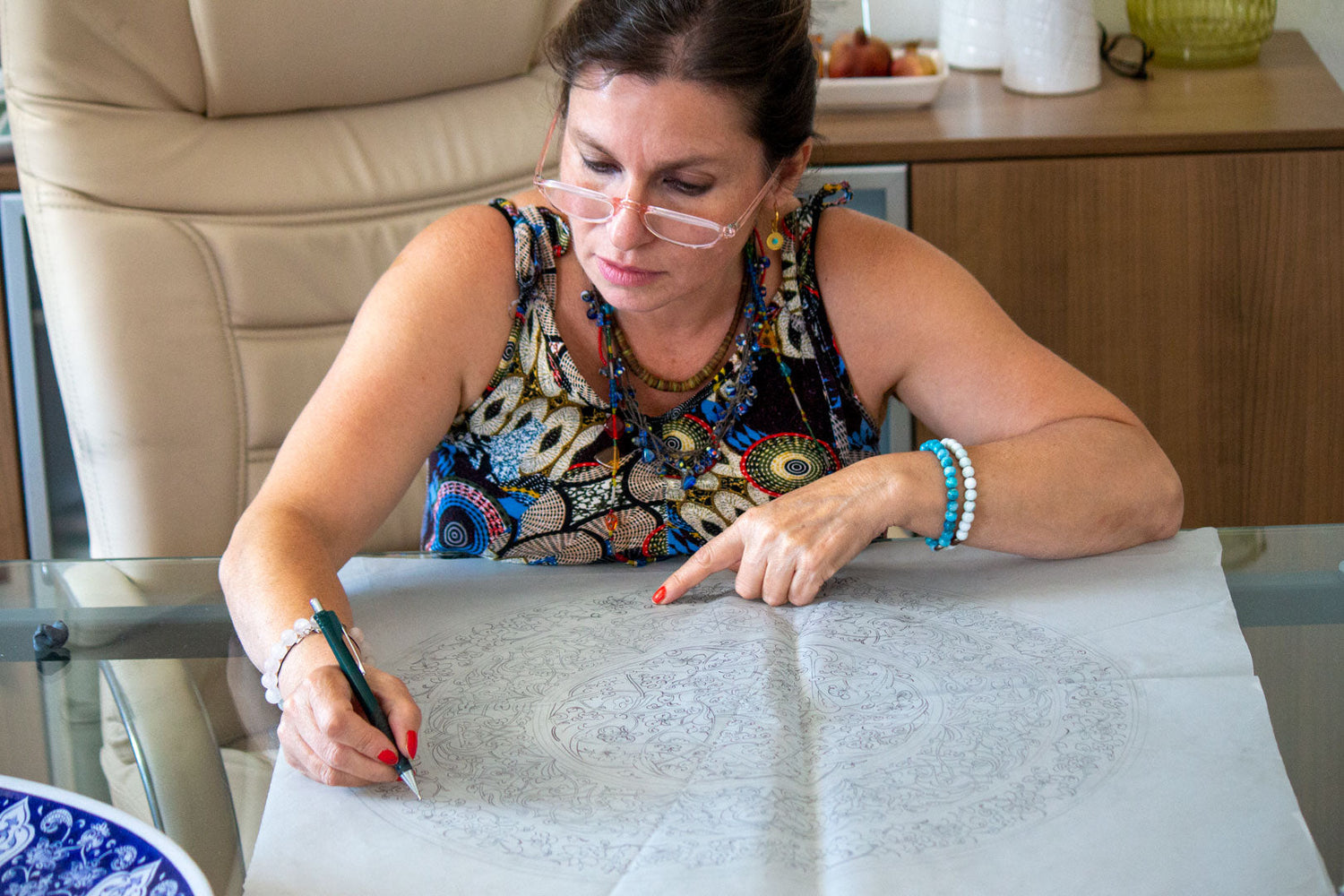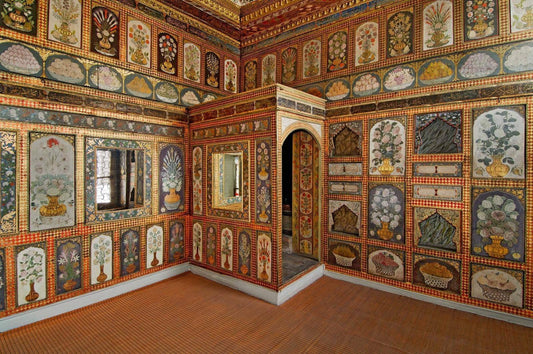The design principles of tile patterns have been the subject of research in various disciplines. Free compositions aside, the arrangement based on a symmetrical, central, and infinitely reproducible principle, commonly called "ulama," is particularly noteworthy. This infinitely reproducible design principle, which we can detect in Turkish architectural decoration since the brick and terracotta geometric patterns of Karakhanid architecture, is based on a deep-rooted understanding of geometry. The inclusion of vegetal curves is also linked to this foundation. In architectural tile decoration programs, the tile module, generally equivalent to 24.5x24.5 cm, is used alongside substandard skirtings or borders, panels, pediments, and corner inlays. The tiles, particularly those suitable for conical tapers, designed and fired with incredible skill in mihrabs, corner inlays, crowns, hearths, and niches, are particularly noteworthy.
Sitare Turan classifies the sub-order of "ulama" compositions, which can extend to infinity, as simple, circular-layered, central, longitudinally developing and sunburst forms (Turan Bakır 1999, 220 ff.).
While the harmony of the taste of the period with the available technique is particularly striking in the patterns of coloured glazed tiles in some buildings in Bursa, Edirne and Istanbul, the diversity in underglaze decoration has reached remarkable levels.
It is necessary to revisit the role of the palace's master craftsman in the design approach that emerged in tile decoration, which reached its peak in the 16th century, and the designs developed within the decorative program of the Imperial Mimarlar Ocağı (Court of Architects). The influence of designs by artists such as Şahkulu and Karamemi on the period's naturalistic style in various artistic disciplines is generally acknowledged. Floral designs, known by various researchers by different names but identified as realistic depictions by Yıldız Demiriz, include motifs such as opium poppy, weeping bride, vine and grape, spring-blooming fruit tree, yellow daisy, crocus, rose, carnation, fuchsia, tulip, anemone (Manisa tulip), violet, fruit-bearing tree, narcissus, cornflower, cypress, hyacinth, iris, lily, and the Virgin Mary lamp, all of which are detailed in tile decoration (Demiriz 1997, 163 ff.).
The inscriptions, based on their structural characteristics, were designed using templates from works by renowned calligraphers of the period, while the floor decorations also bear the same striking features. A detailed study of the tile decoration patterns in Mimar Sinan's works has been conducted by Şerare Yetkin (Yetkin 1988, 479-493) ('Treasure of Anatolian Soil: Tiles', Belgin Demirsar Arlı and Ara Altun, p. 65).




